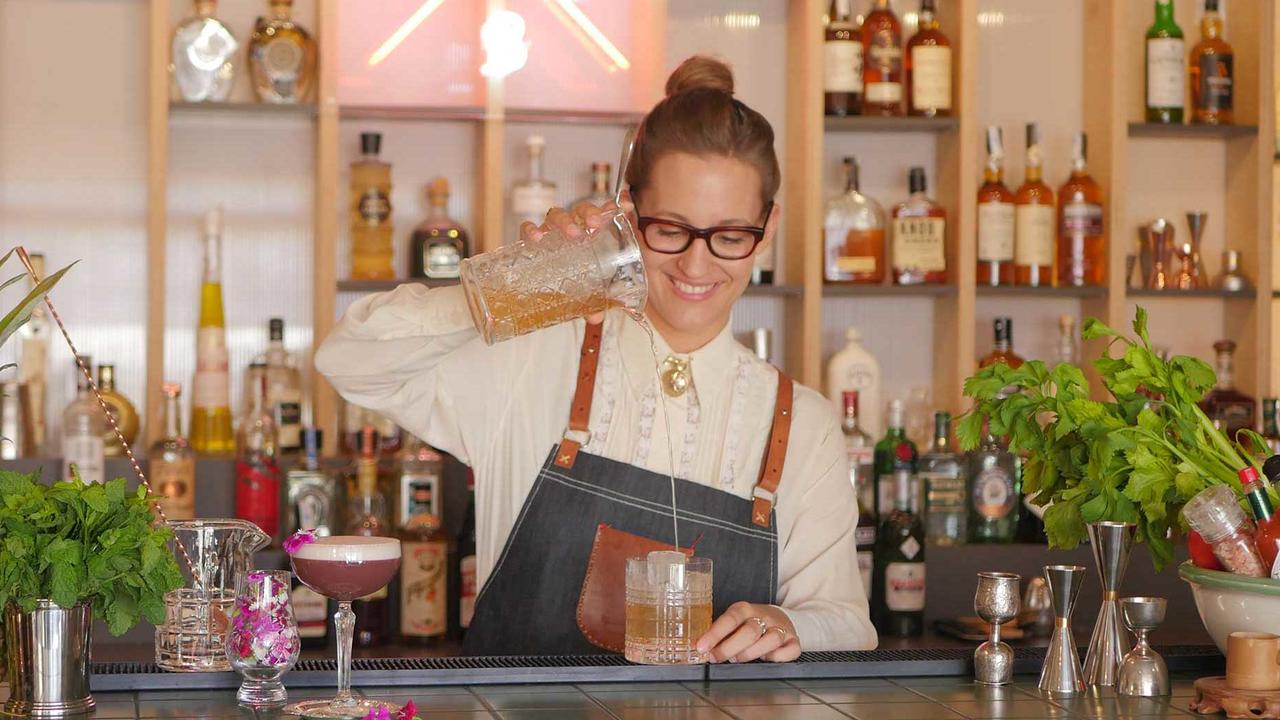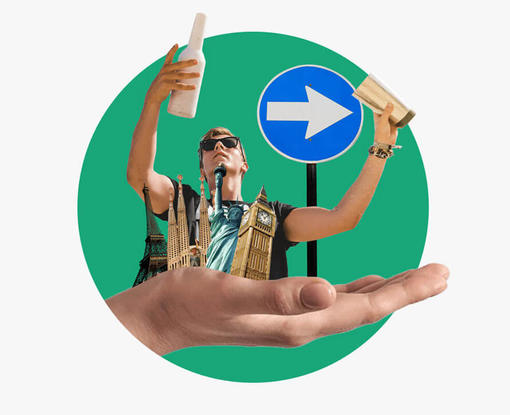There is a lot more to bartending than just making drinks and cocktails. To be a real expert behind the bar, you'll need to master skills and tools, understand service and learn mixology, plus other essentials. Get all these things right and you’ll thrive.
Discover more about the basics of bartending with these expert tips and tricks…
Bar skills
Perfecting the art of cocktail-making, means grasping all the techniques first. And there's more of them than you'd imagine.
Whether it’s shaking, stirring or building, they require attention to detail and methodology to deliver a perfect cocktail. And it’s vital to get this bit right - because poor technique is going to lead to a poor-tasting cocktail.
Prospective bartenders should pay attention here!
Building
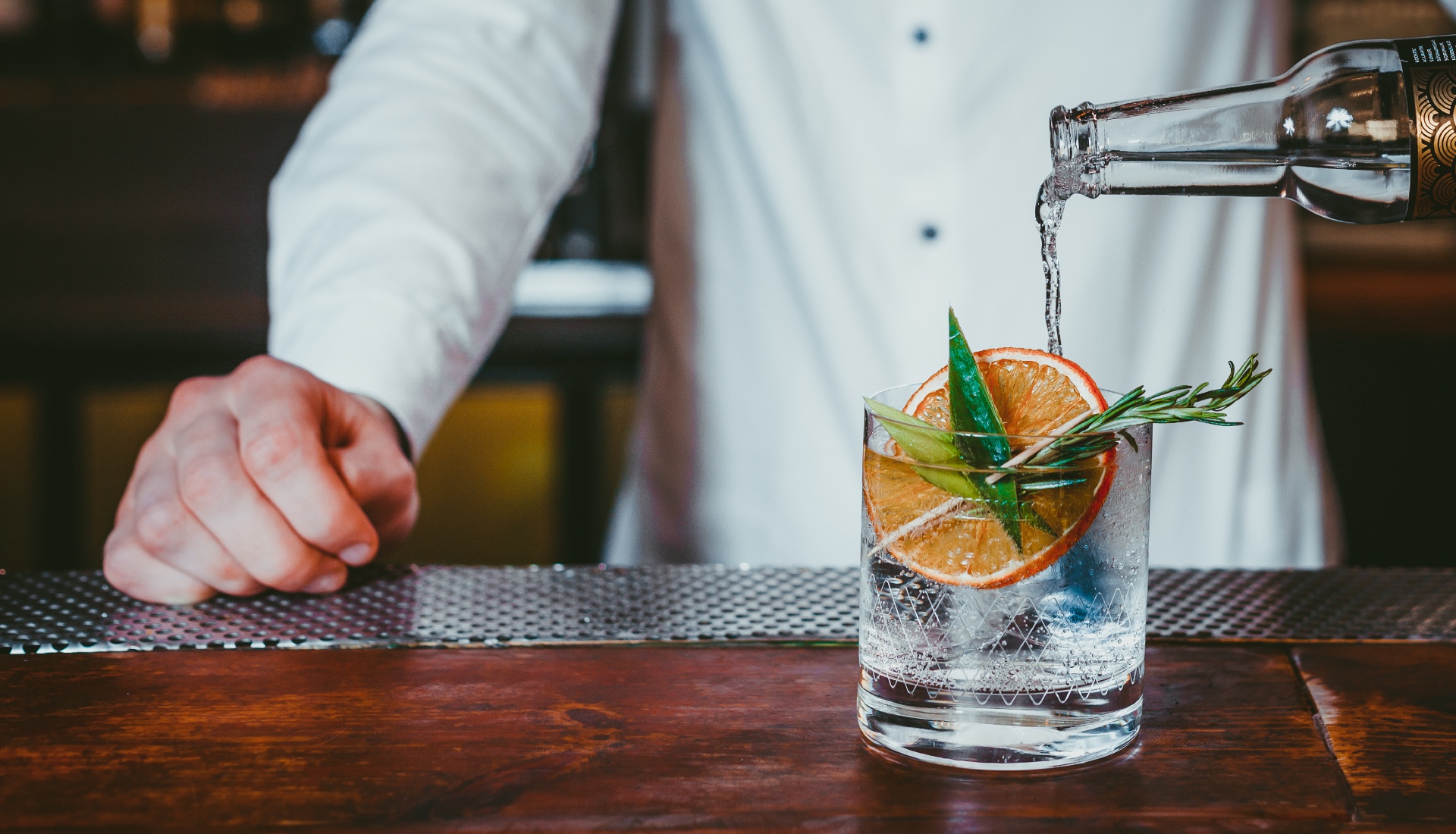
Bartender beginners will be very familiar with this method. As building cocktails is the most simple way to make cocktails, and is usually taught first to would-be bartenders. Those of you who whip up gin and tonics at home should be well-rehearsed in this basic bar skill, too.
Drinks that require ‘building’ can be served immediately once all the ingredients have been poured and mixed in the glass. Unlike shaking or stirring, building is ‘tool-free’, making it incredibly useful and efficient during those happy hours…
The Gin and Tonic, Moscow Mule and Screwdriver are just a few examples of ‘built cocktails’.
Shaking
There’s nothing better than standing at the bar amongst excited revellers cheering on the bartender as they shake your cocktail - and this popular bar skill involves using a cocktail shaker to fuse the ingredients together.
A backwards and forwards motion is performed to shake up the ingredients, quickly chilling the drink and changing the texture to something much lighter. This means that shaken cocktails appear cloudy in appearance, due to the air bubbles.
Mastering this technique can be a bit of a lengthy process and every bartender has their own shaking preferences. However, how to use a cocktail shaker depends on what kind of cocktail you’re making. For example, cocktails that contain egg whites require a style of shaking called the ‘dry shake’ and ‘reverse dry shake’ to help integrate the egg.
Cocktails that need to be shaken include; Piña Colada, Zombie, Singapore Sling and the Espresso Martini.
Stirring
If you’re not watching your bartender shake or build, then they’re probably stirring your cocktail. It may seem like a simple action, but in fact, it’s easy to spot a poorly stirred drink.
Unlike building, stirring aims to fully incorporate the ingredients, whilst chilling and diluting them a little. Some cocktails require that soft touch, something shaking can’t provide.
Stirring won’t aggressively disturb the ingredients, making it great for those drinks that need a bit of TLC. Stirred cocktails, therefore, come without a cloudy appearance when served.
Stirring cocktails well, requires a bar spoon and sometimes a stirring glass, too. Cocktails that contain alcohol only are stirred much more often than those with mixers. Examples of stirred cocktails include; the Negroni, Martini, and the Rob Roy.
Muddling

We’ve all seen a bartender work their magic on lime, sugar and mint leaves in a glass whilst making a mojito. But what exactly are they doing? They’re muddling. And the aim of the game here is to extract the oils, juices and flavours from fresh ingredients.
For cocktails requiring muddling, this is the first step. Any stirring, building or shaking comes after.
Muddling helps the ingredient achieve a fresh, raw flavour within the cocktail. Herbs, sugar, spices and fruits are commonly muddled to change the focus of their taste profile slightly. In fruit, for example, not only is the juice extracted, but the oils from the peel are too.
A bartender uses a cocktail muddler to perform this skill. It’s long, wooden with a flat-ended surface, and bartenders will press down on the ingredients in the glass with the muddler in order to fully extract the flavours.
Classic cocktails like the Mint Julep, Caipirinha and the ultimate Mojito recipe need to be muddled.
Straining
If we’re talking about the most understated bar skills in bartending, then straining has to take the number one spot.
Do not underestimate how important straining is - because almost every cocktail requires some degree of straining after shaking, stirring or mixing.
By straining a cocktail, the bartender ensures that the cocktail is smooth and finished professionally. Many cocktails are served with ice that can cause dilution over time, weakening the taste and experience. However, straining a cold and mixed cocktail over fresh ice or into a chilled glass allows us to more precisely control the drinking experience of the customer, ensuring minimum dilution and maximum flavour.
There are three different types of strainers used in bartending; the Hawthorne Strainer, Julep Strainer and Fine Strainer. Each strainer has a different purpose, so it’s vital to learn exactly how to use a cocktail strainer.
Blending
Simply put, blending is the art of using a blender for cocktail making and is usually a way to incorporate ice into a cocktail, while also creating a smooth texture.
Getting that perfect flavour and texture requires more ice than liquid in the cocktail. If too little ice is used, then the cocktail will melt quicker, resulting in an underwhelmed customer. Learning how to use a blender will make your life much easier; add your cocktail ingredients, fill your blender with ice and blitz until the texture is right.
Popular blended cocktails include the Frozen Margarita and Frozen Piña Colada.
However, almost any cocktail can be transformed into a frozen version.
Layering
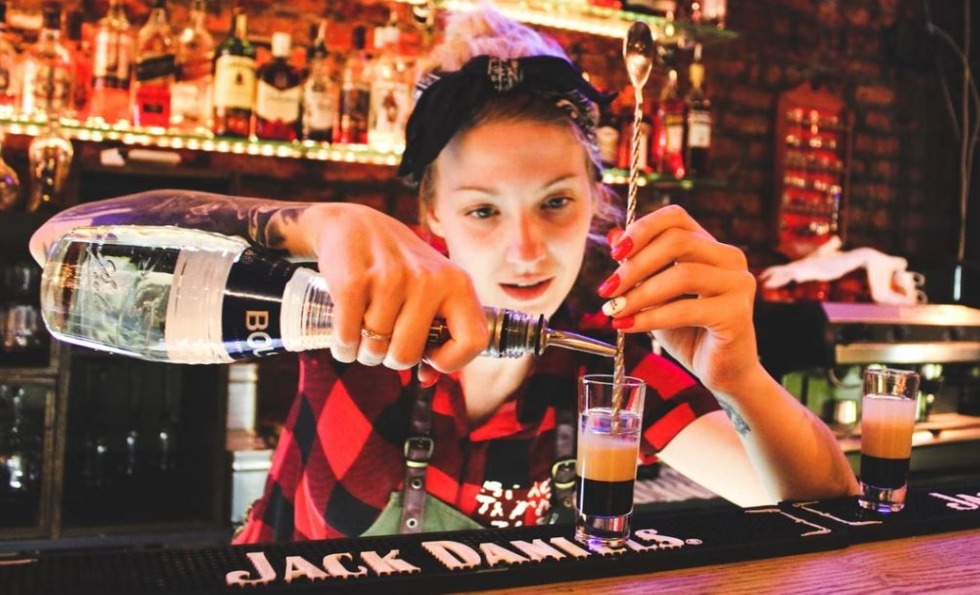
Layering really is a bar skill that separates the men from the boys (as the saying goes).
It’s one the hardest bar skills to master, requiring a good knowledge of liquids and a steady hand. A layered, or ‘stacked’, cocktail is a drink with visibly unmixed layers, as the liquids sit on each other.
Spirits, liqueurs and juices are all used to achieve a visibly pleasing drink, and bartenders will use a bar spoon to gently pour each liquid on top of each other, ensuring smooth defined layers onto the liquid below it.
Most layered cocktails are actually shots. The B52 and Slippery Nipple are two well-known examples of this, as are the rainbow shots. The Tequila Sunrise, however, is a famous layered mixed drink, with its vibrant red bottom and orange top.
Rolling
Rolling is a method of mixing by moving the drink between two tins and is a gentle way of mixing and chilling a cocktail. Some practice is needed to perfect this technique and to avoid accidents.
Cocktails that are rolled often keep the same texture they started with because less air is incorporated into the mixture.
To roll well, simply use two tins and gently pour the mixture from one into the other. Most bartenders use the Boston Shaker tins to perform this action. Those who are expert rollers use the whole length of their arms to roll the mixture, making for a fantastic spectacle.
The Bloody Mary, however, is a cocktail that should be rolled, over shaken, so it can keep its famously thick consistency when being enjoyed with a hangover.
Bar tools
There are a whole range of bar tools that are integral for cocktail making. Here we’ve listed the essential bar tools every bartender should know about…
Boston Shaker

For the professional bartender, the Boston Shaker is the most widely used cocktail shaker out there.
It comes as two tins, the smaller ‘mixing glass’ and the larger ‘tin’, which fit nicely together. Sometimes, the mixing glass is a pint glass, instead of another tin.
The idea is to mix the ingredients together whilst simultaneously diluting and chilling them. Boston Shakers don’t have a built-in strainer (unlike their Cobbler counterparts) so bartenders need an added strainer too, like a Hawthorne Strainer.
Simply fill the mixing glass with the ingredients and shake with or without ice, depending on the recipe.
Cobbler Shaker
The Cobbler Shaker is also used for shaking cocktails and you may be more familiar with this shaker, due to its iconic shape. The Cobbler is a three-piece with an inbuilt strainer and lid. It’s slightly heavier but has the same function as the Boston.
The Cobbler Shaker is less popular with bartenders as it lacks the ability to double strain, which means small particles may fall through the strainer into the cocktail, ruining the very important cocktail aesthetic. Those using a Cobbler might decide to use a Fine Strainer to avoid this.
Hawthorne Strainer

The Hawthorne Strainer looks more complicated than it actually is. They are commonplace during a busy bar service and bartenders love to use them alongside a Boston Shaker, for a- double strain.
Its intelligent design means it’s able to double strain, unlike other cocktail strainers so any small particles of ice or food can be doubly prevented from dropping into the cocktail.
Plus, their design means that they can be clicked onto a Boston Shaker to make for an easier and more successful strain.
The Hawthorne Strainer is a bartender’s best friend and should be well practised to ensure good technique. Don’t rush it; a patient pour is the best pour.
Julep Strainer
The Julep Strainer has been around since the birth of the cocktail and used to be a firm favourite amongst the cocktail drinkers until the Hawthorne came along revolutionising the art of cocktail making.
Unlike the Hawthorne, the Julep Strainer was originally used by customers and has a shorter strainer with an oversized spoon-like design. It was utilised with crushed ice cocktails to prevent the ice from falling out when drinking - providing a better drinking experience.
For this reason, cocktails like the Mint Julep and Whiskey Smash are popular to drink with a Julep Strainer.
Fine Strainer
Usually paired with the Cobbler Shaker, the Fine Strainer is similar to standard strainers you’d find in your kitchen. Its function is to remove very fine particles after mixing, effectively serving as a double strain.
Drinks that are served ‘straight up’ usually call for a Fine Strainer to ensure the ultimate smooth finish.
Bar spoon
Underwhelming in appearance and name, those dismissing the bar spoon ignore it at their peril. Ok, maybe that’s a bit dramatic, but it’s an important bar tool for bartenders as any cocktail that needs stirring, will require the bar spoon.
The long, twisted shaft means it’s a perfect design for cocktail making and for the user alike. Bar spoons are often used with a stirring glass and then poured into the serving glass. There are a few different variations of the Bar spoon including, the European, American and Japanese and each have slight differences in style and function, so be sure to read up more about them.
Jigger
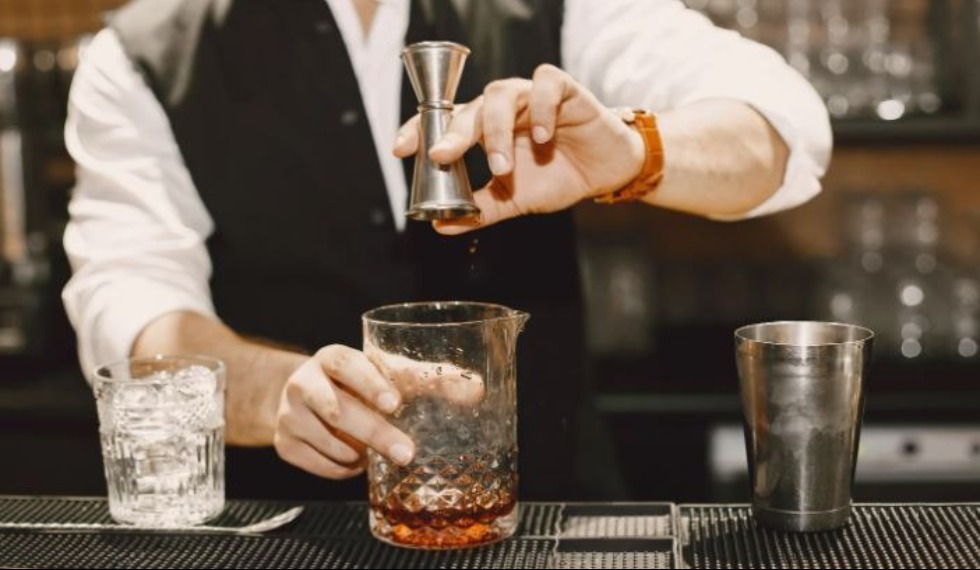
What is a jigger? We're sure you're wondering this and given its name, it's no surprise. Everyone’s seen a bartender using one of these, and probably assume it’s just called a ‘cocktail measurer’. In fact, its name is a ‘jigger’ and can be found in every bar on the planet without fail. Jiggers are the bar tool used to measure out liquids accurately when making cocktails.
If a cocktail requires very specific amounts of several ingredients to balance its harmony of flavours, use the jigger. Their double-ended design means bartenders can pour out a single or double shot quickly. There may be slight variations in appearance but the jigger measurements and function remains the same.
Mixology has taken on a more formulaic style in recent years and jiggers have become an integral part of this. When creating that perfectly balanced cocktail, always use the jigger.
Mexican Elbow
Unfortunately (or fortunately), the Mexican Elbow is not some sort of deadly wrestling move. Instead, it’s a tool that has been making the lives of bartenders easier since its inception.
It’s a lightweight, handheld device with the sole function of squeezing juice from citrus fruits. And for those with zero imagination, it’s also known as the ‘Hand Citrus Press’ or ‘Citrus Squeezer’.
Place a halved piece of fruit into the tool and press down. It’s that simple.
Mexican Elbows also come with an inbuilt simple strainer, meaning pips and pulp are less likely to fall through into the glass. But beware of rouge citrus spray when pressing! Your eyes will thank us later.
Juice pourers
Organisation behind the bar is imperative, and juice pourers make excellent saving bar tools.
Juices, cartons and bottles come in different sizes, making them hard to stack and store, however, pourer bottles are uniform in size and can be stored neatly in one area. Just decant your juice into a pourer and you are good to go.
They can also be easily coloured coded, making service faster behind the bar, which is great when a table of 10 orders 10 different cocktails all at once…
Other bar tools
Smaller or less frequently used tools like bar caddies, rimmers, bar mats and pouring spouts are included here.
The bar caddy is the black box that sits on top of the bar and holds items like napkins, straws and stirrers for customers. It’s compact and easy to keep clean so, bartenders can concentrate on their job without customers endlessly asking for a straw.
Rimmers are exclusively used for coating the rim of a glass with salt or sugar. They come as a circular, retractable tray, which stores contents for glasses to be dipped in. If you’re a Margarita-heavy bar, then this is a must-buy.
Pouring spouts can be attached to bottles to help the bartender when pouring liquids. They offer the bartender a consistent, manageable flow. This means they’re great for free pouring! Do not free pour without a pouring spout!
And last but not least, bar mats, that keep your bar clean and safe. They are made from rubber so bartenders can prepare drinks without risk of spilling or knocking drinks over.
Bar Service
When we talk about ‘Bar Service’, we mean the actions of bartenders that aren’t related to mixing techniques, such as shaking or stirring. Serving, measuring and garnishing are all examples of service skills and it’s these techniques that help start or finish your cocktail.
Measuring
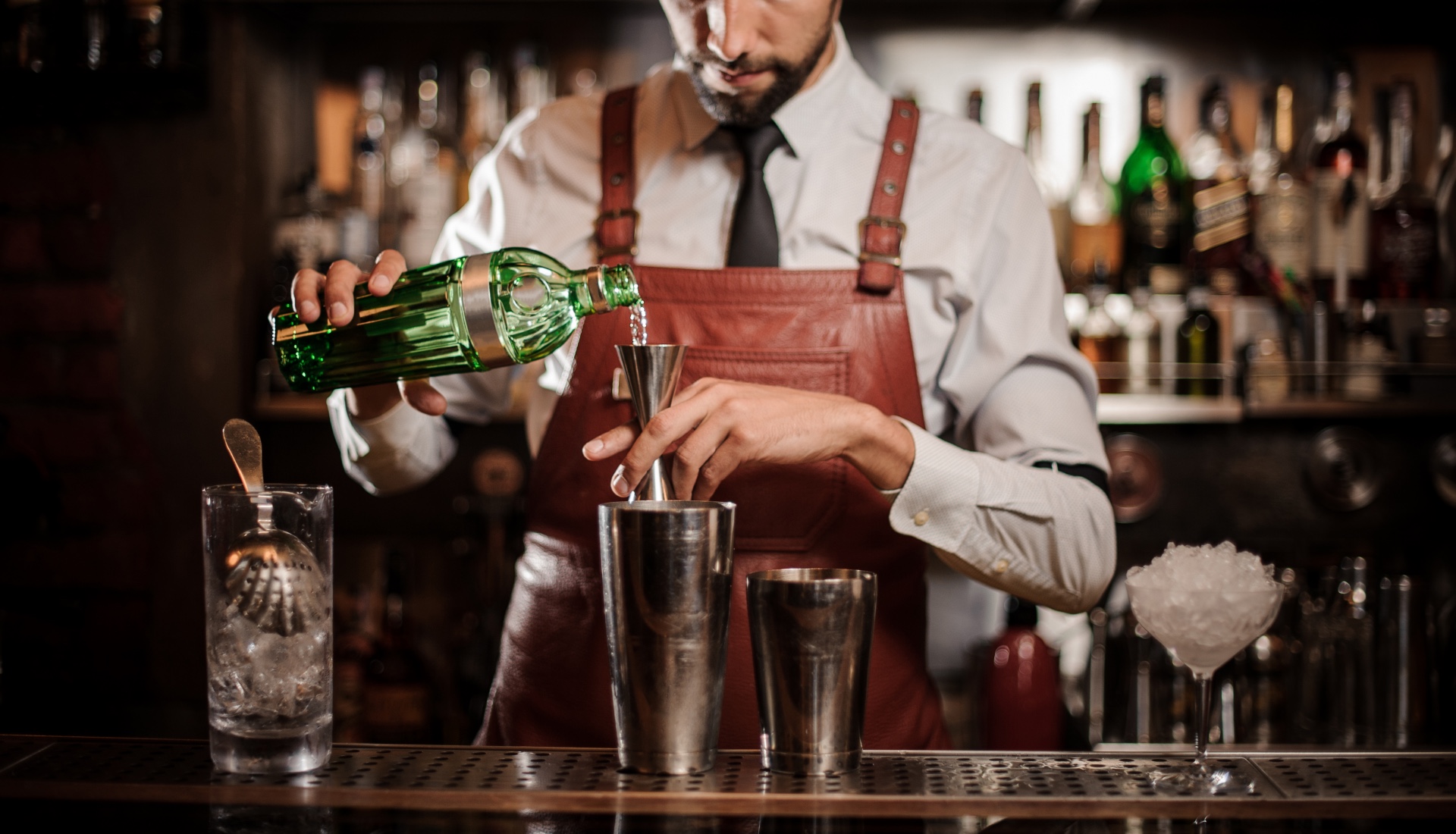
The art of cocktail making is a delicate and often scientific one.
Cocktails and their measurements have been carefully tweaked to create the tastes we know and love. Therefore, learning how to measure and the different kinds of cocktail measures is paramount when working behind the bar.
Measuring can either be done with a jigger or by free pouring. With a jigger, the measurement will be accurate without the bartender having to think too much.
To free pour, bartenders need a bit more practice to master this service skill and often needs a qualification! Eventually it becomes second nature to know how much to pour according to each cocktail recipe.
Picking the right glass
There are also a huge variety of glasses to choose from when setting up a bar.
These can range from a highball glass (for built drinks such as a Gin and Tonic or Tequila Sunrise), to a Collins or a Martini glass. In fact, at last count, there were over 20 different types of cocktail glasses and each one serves a different drink for a very different reason.
For example; a martini glass with its longer stems to minimises heat transfer while the wider lip of the glass enhances the aroma of your drink, allowing it to breathe.
Will you need them all? Well that depends on which kind of concoctions you will be brewing, but at the very least you’ll need at least half.
Garnishing

It doesn’t matter if it’s a wedge, slice, twist, wheel or even a glacier cherry, cocktail garnishes are there to make a drink more visually appealing and to nudge a ‘wow’ out of the customer.
Some of the most common garnishes are fruits, however, a bartender can’t just hang half a pineapple off the side of a Piña Colada. It must be cut into something aesthetically pleasing - think an exquisite orange twist balanced carefully on a Negroni.
Other garnishes include savoury foods like olives and sweet onions. Ever tried to serve a vodka martini without an olive to a member of the British Secret Service? Well, don’t.
Salty rims are all the rage these days, more so than sugary ones, and when it comes to herbs, mint is a bartender’s favourite pick. Not only providing a refreshing smell and taste, but adding a vibrant green to the cocktail.
Just remember to keep cocktail garnishes relevant and clean. Follow these two simple rules and everything will be fine...
Serving
Serving is the final step of cocktail making, but it's the first step of the customer’s cocktail experience. So even the simplest of cocktails require attention when serving them.
Serving encapsulates a broad range of elements like glassware, ice, pouring and garnishing. Bartenders must perform a perfect serve every time an order comes in. A large order of many different kinds of cocktails tests even the best of bartenders to get each drink perfect.
Another element, often overlooked, is a bartender’s attitude. Being welcoming, forthcoming and attentive costs nothing, and it’s the very least a customer should expect.
A bartender’s attitude can make or break a customer’s experience, transforming a sweet cocktail sour or vice-versa.
Mixology

You might be wondering ‘what is mixology?’ In essence, mixology is the art of mixing ingredients to make cocktails. It’s a science that sets apart an average bartender who makes cocktails from a great bartender who invents them.
Mixologists go beyond just making drinks behind the bar and create their own, exceptional, unusual and often innovative cocktail recipes that inspire their fellow bartenders and the industry alike.
To be good at mixology requires an expert understanding of flavours, ingredients and history, and learning the ways a mixologist is a great way for a bartender to grow and progress. Make your own homemade falernum recipe, infuse some gin or source local niche ingredients. It's all part of learning the way of the mixologist!
Interested in learning all about it? Then our mixology course might be for you.
Stocking your bar
Unsurprisingly, understanding which alcohol you’ll need behind your bar is an essential requirement for any bartender. There are three categories of booze basics that need to be in your bar inventory and on your shelves; spirits, liqueurs and fortified wine. Here’s a bit on each…
Spirits
There are six essential spirits you have to have in any bar; vodka, gin, rum, tequila, whiskey and brandy or cognac. Almost all cocktail recipes contain at least one of these six spirits, so they should be readily available behind the bar.
Liqueurs
Liqueurs can be split into five different types of liqueur: bitter, herbal, fruit, nutty and emulsion liqueurs.
Fernet Branca and Jägermeister are two popular bitter digestif drinks. They are sweetened bitter liqueurs, meaning they can be consumed straight, without a nasty bitter aftertaste (hopefully).
Herbal liqueurs include some absolute classics like Benedictine, Drambuie, Campari and Italy's national treasure, Aperol. Some of the classic cocktails like the Singapore Sling, Aperol Spritz or the classic Negroni recipe all need these liqueurs, so don't forget them!
Fruit liqueurs include, Grand Marnier, Maraschino, Midori, Curaçao, Triple Sec and Limoncello are six essential fruit liqueurs to know about. They are also integral ingredients of classic cocktails like the Kir Royal, Aviation and Bramble.
For those of you nuts about nutty liqueurs, here’s our essential list for your bar: Amaretto, Kahlua, Frangelico, Tia Maria, Crème de Cacao and Malibu. Take these liqueurs as a digestif or in a cocktail, it's your choice! Some classics include the Espresso Martini, Brandy Alexander and Amaretto Sour.
Finally, have you ever wondered what is Irish Cream exactly? Well, it’s an emulsion liqueur, and these are usually made from cream and eggs. They’re very heavy and have a very thick consistency. Bailey’s Irish cream and Advocaat are the two most used emulsion liqueurs in bartending, and still deserve a spot on your bar shelves.
Fortified wine
A bar is nothing without a type of Martini on the menu and for Martinis you need a fortified wine, like dry vermouth. Whether you’re making a vodka or gin Martini, the dry vermouth will never change.
Sitting alongside dry vermouth on the shelf should be a bottle of the sweet version. Stocking sweet vermouth is going to enable you to make Negronis and Americanos. And, if a bar is nothing without a Martini on the menu, it’s even worse without a Negroni.
Want to try making your own vermouth at home? Learn all about the simple recipe in our 'How To Make Vermouth' blog.
Bartending Extras
Ice
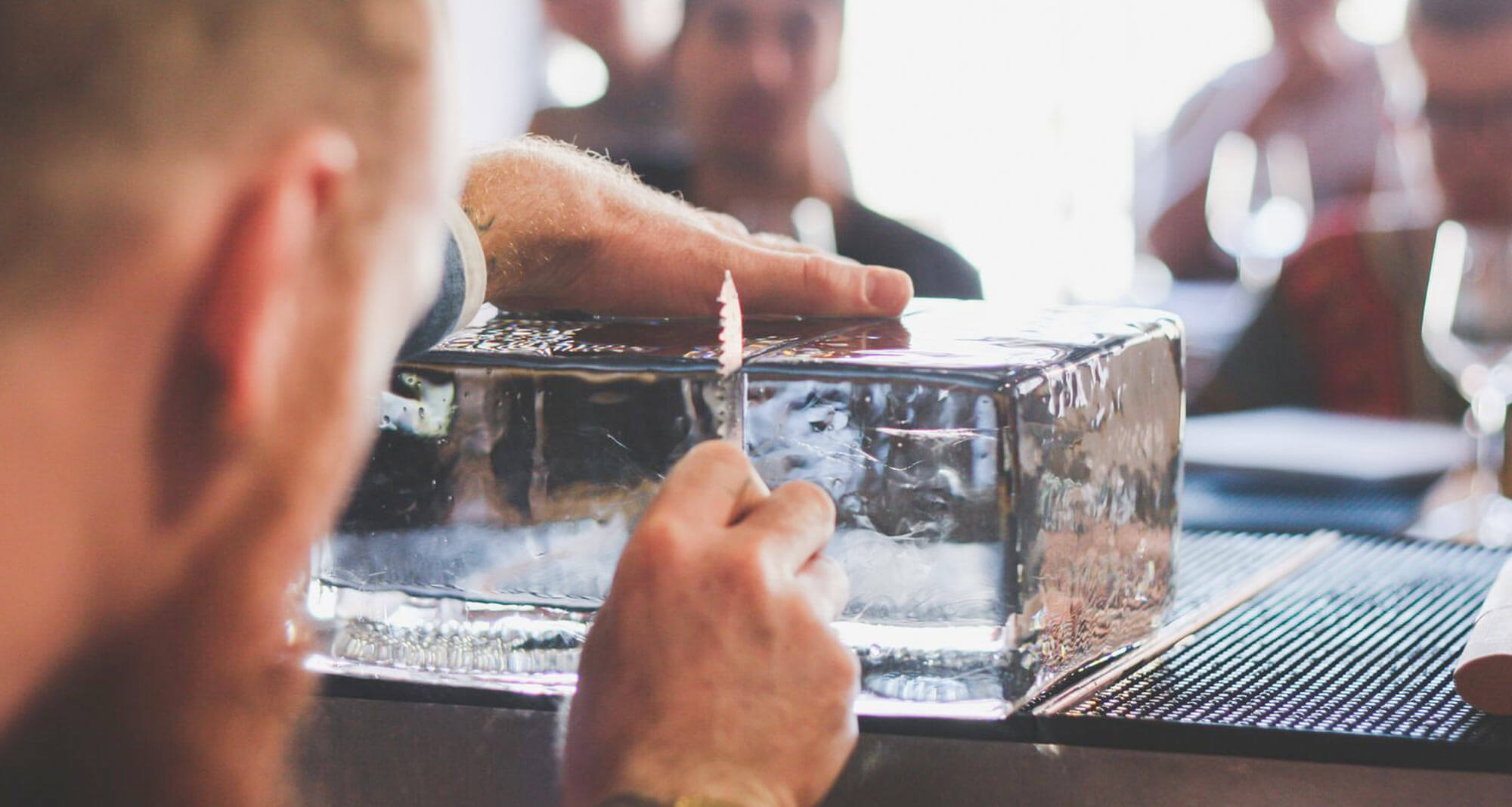
Just like bartenders - ice comes in all shapes and sizes. But which is best?
Well, some cocktails specify crushed ice in their recipes (hello, Mojito there at the back), while others require cubes for building. But one thing's for sure - your ice needs to be as clear as possible.
Yes, perfectly clear transparent ice is best. But how do you make it? As with most things to do with bartending basics, the key is time. Basically, ice becomes cloudy when it’s frozen too quickly - so when it’s added to your cocktail it will melt much faster.
So, the trick is to freeze the water very very slowly - over 24 - 48 hours. When rock hard and crystal clear, carve it up with a hacksaw. And that’s how to make clear ice.
Now those cocktails will look even better…
Bar tricks
The cocktails might be the main event, but being a great bartender is also about creating a fun experience for your punters - and what could be more entertaining than a few tricks? A simple napkin twist can wow a crowd and as for flaming your orange peel, well the pyrotechnics are guaranteed to impress any punter.
Bar tricks include basic flair (but more on that below), spinning and flipping bottles, spoon spinning and ice throwing, but practice makes perfect as the old adage goes, so we recommend refining your balance, flips and spins before you try them out in front of paying customers.
Bar flair
While not exactly a bartender basic, flair bartending is another way to entertain your customers. A bartender will juggle with all manner of bar tools and liquor bottles in flashy (and sometimes breathtaking) ways.
Gravity-defying throws, catches, bottle balances are included in a flair bartender's arsenal and if they perform these while making your mixed drink, it's called 'working flair'.
Mastering flair takes training and a lot of practice. If you think you've got the skills needed to become a flair bartender, try our flair bartending course.
Bartender jokes
And finally, bartender jokes.
Cheesier than an entire wheel of camembert and just as hard to digest, 'a man walks into a bar' jokes are still a thing! They are also a good way to connect with your customers. While they're not a bartending basic, having a few of these jokes up your sleeve won't hurt...
